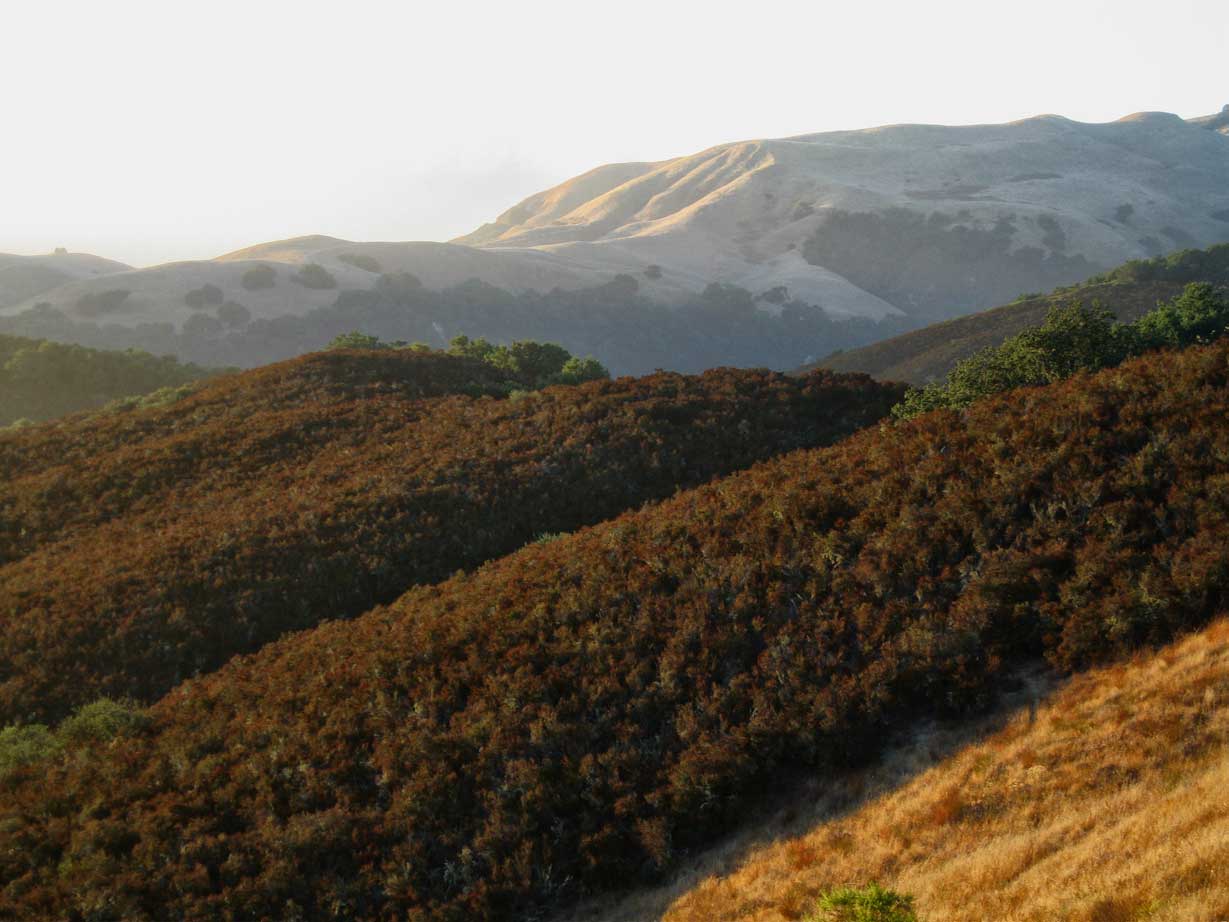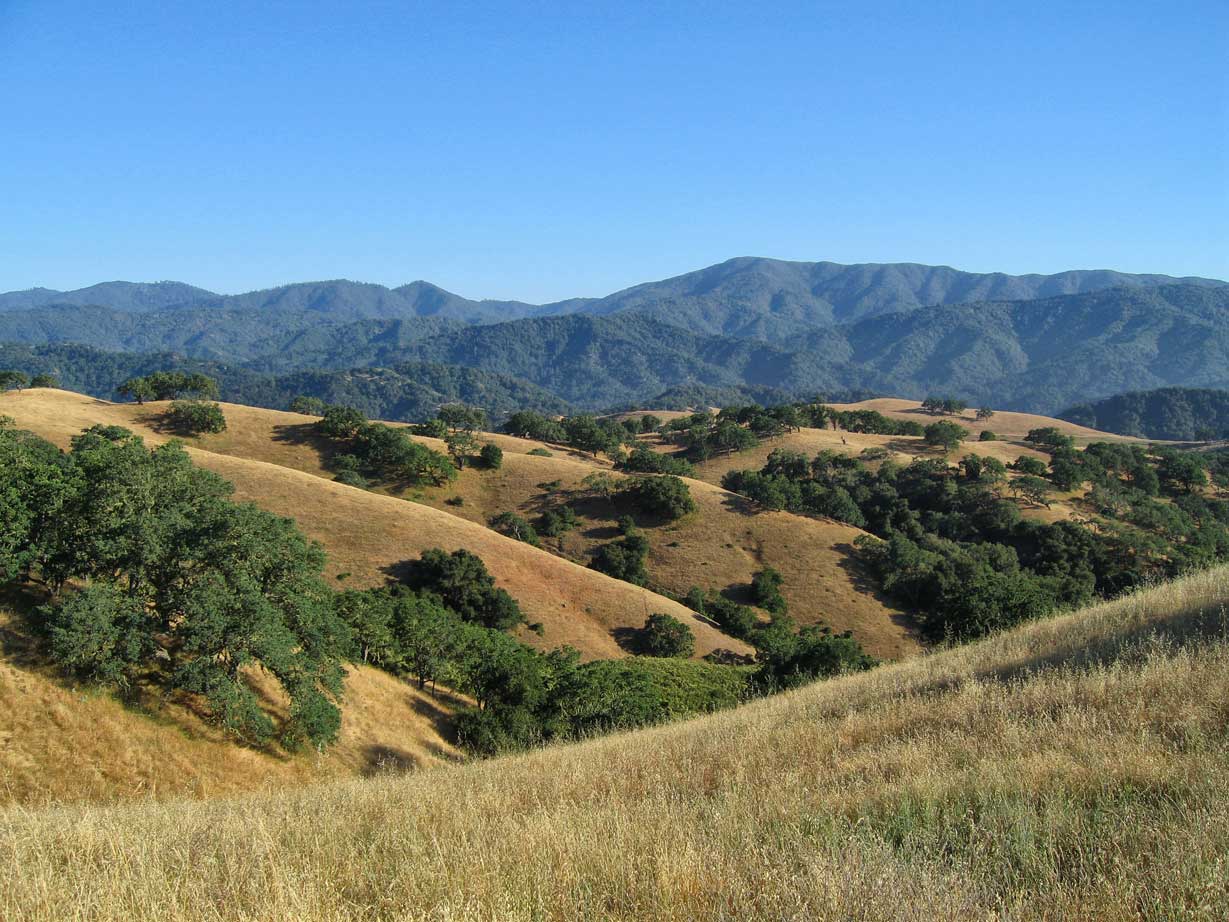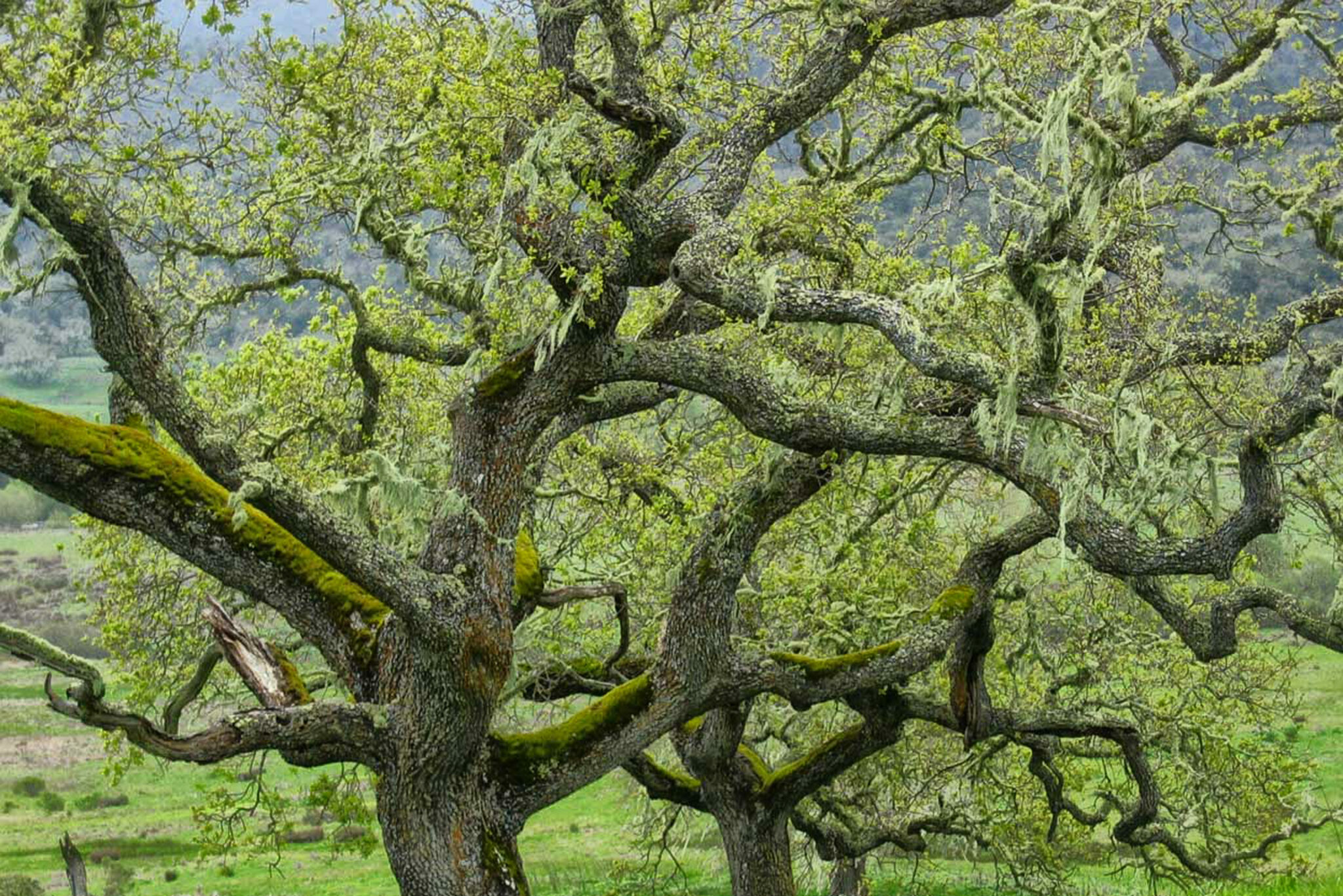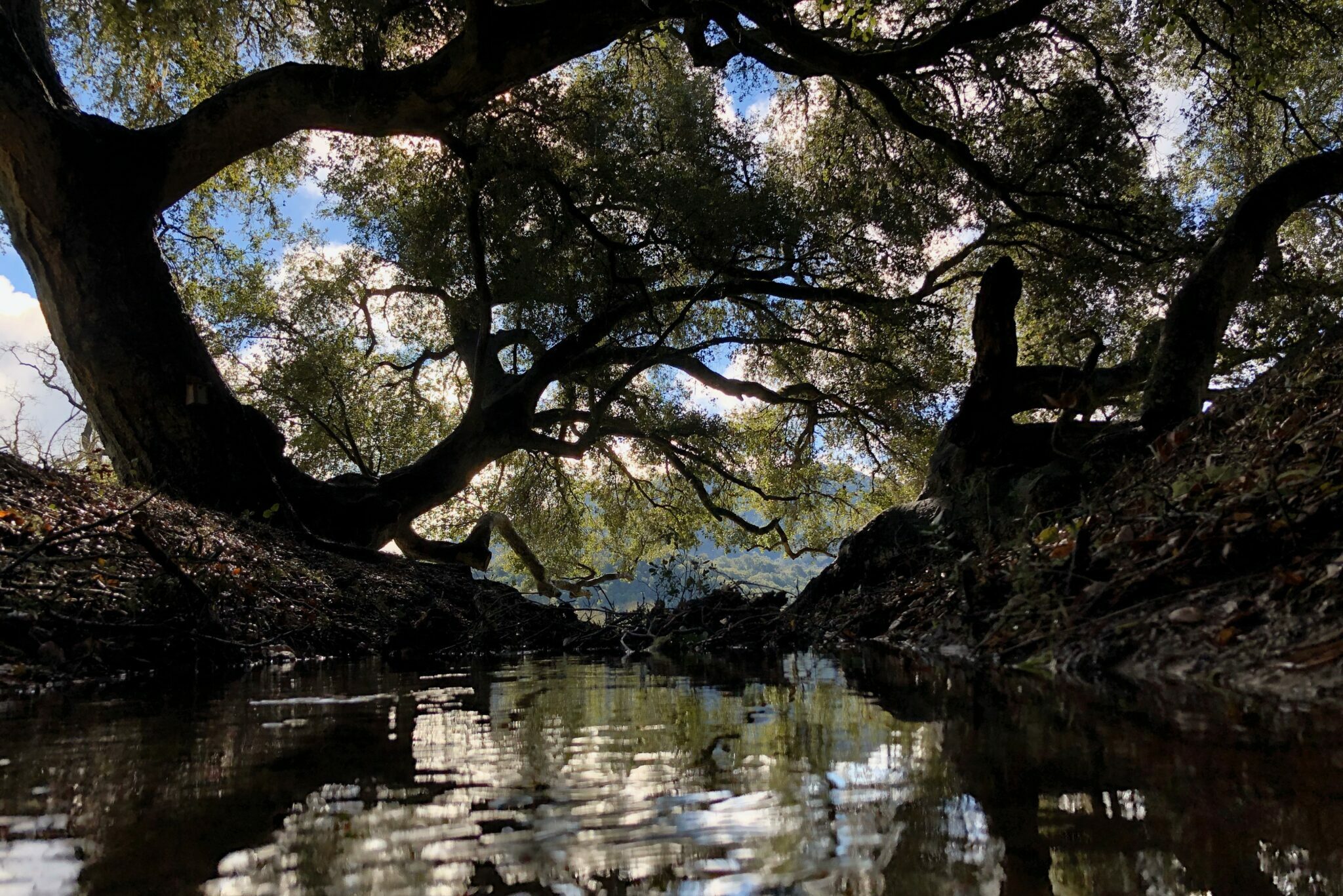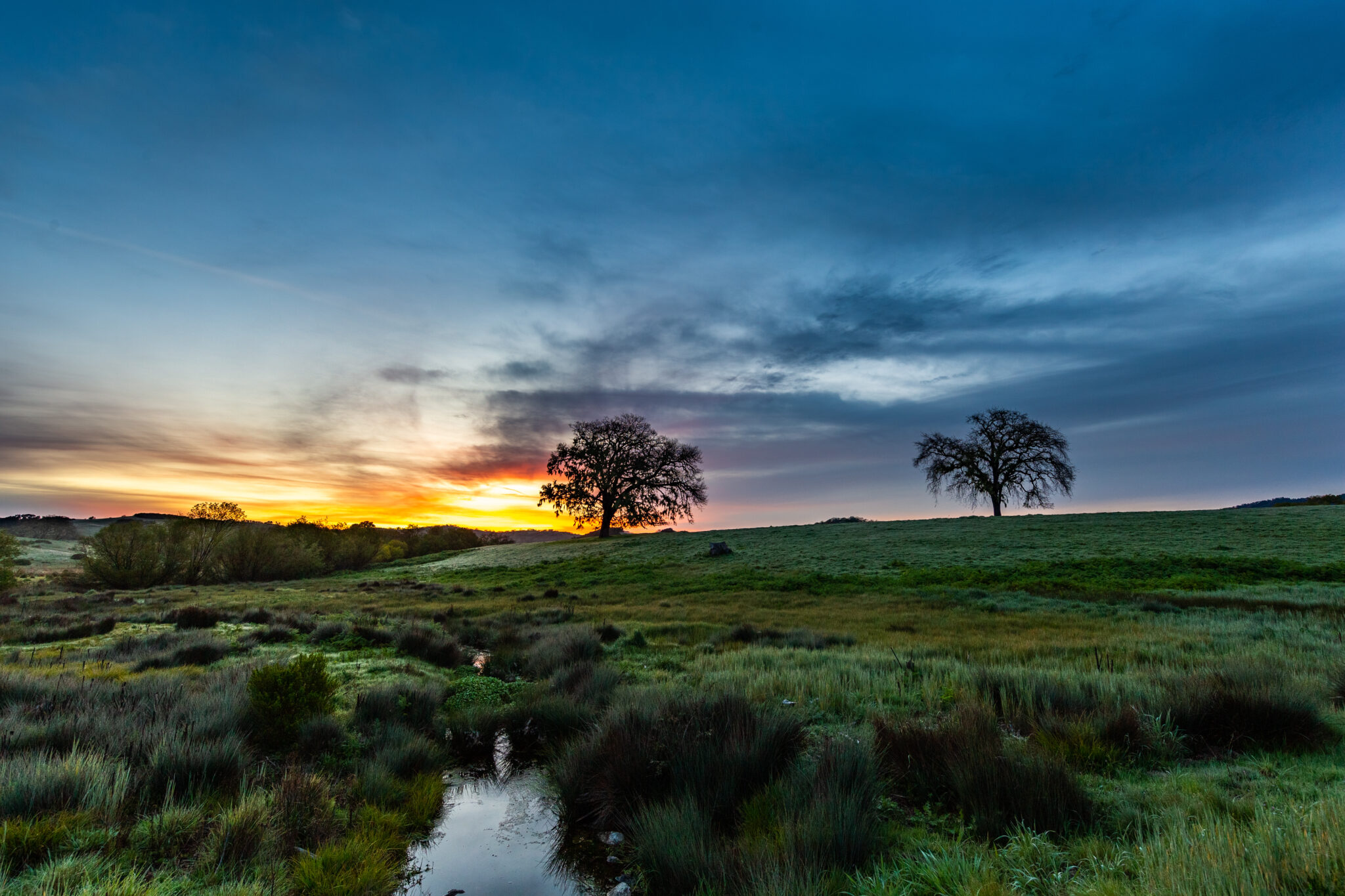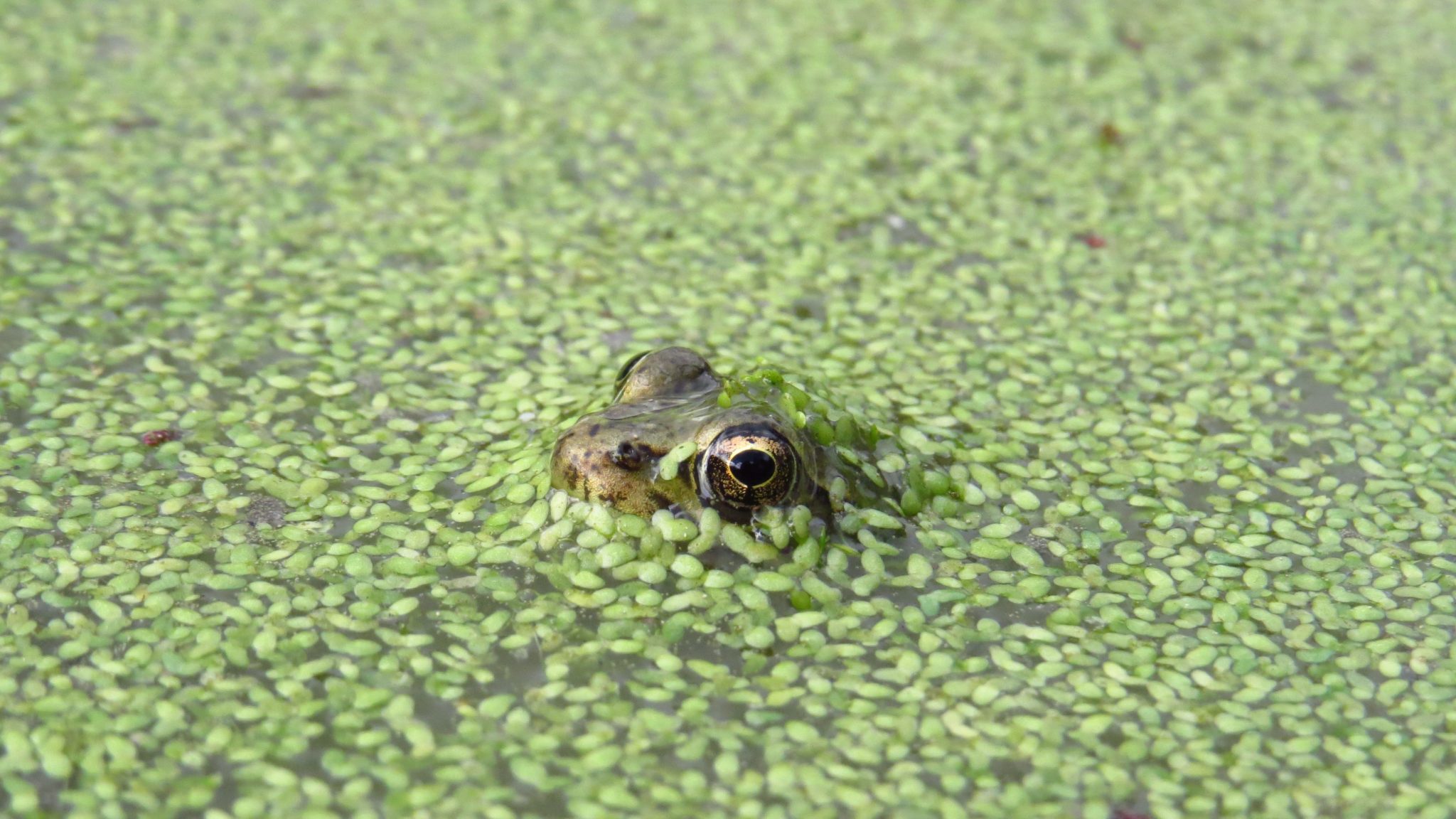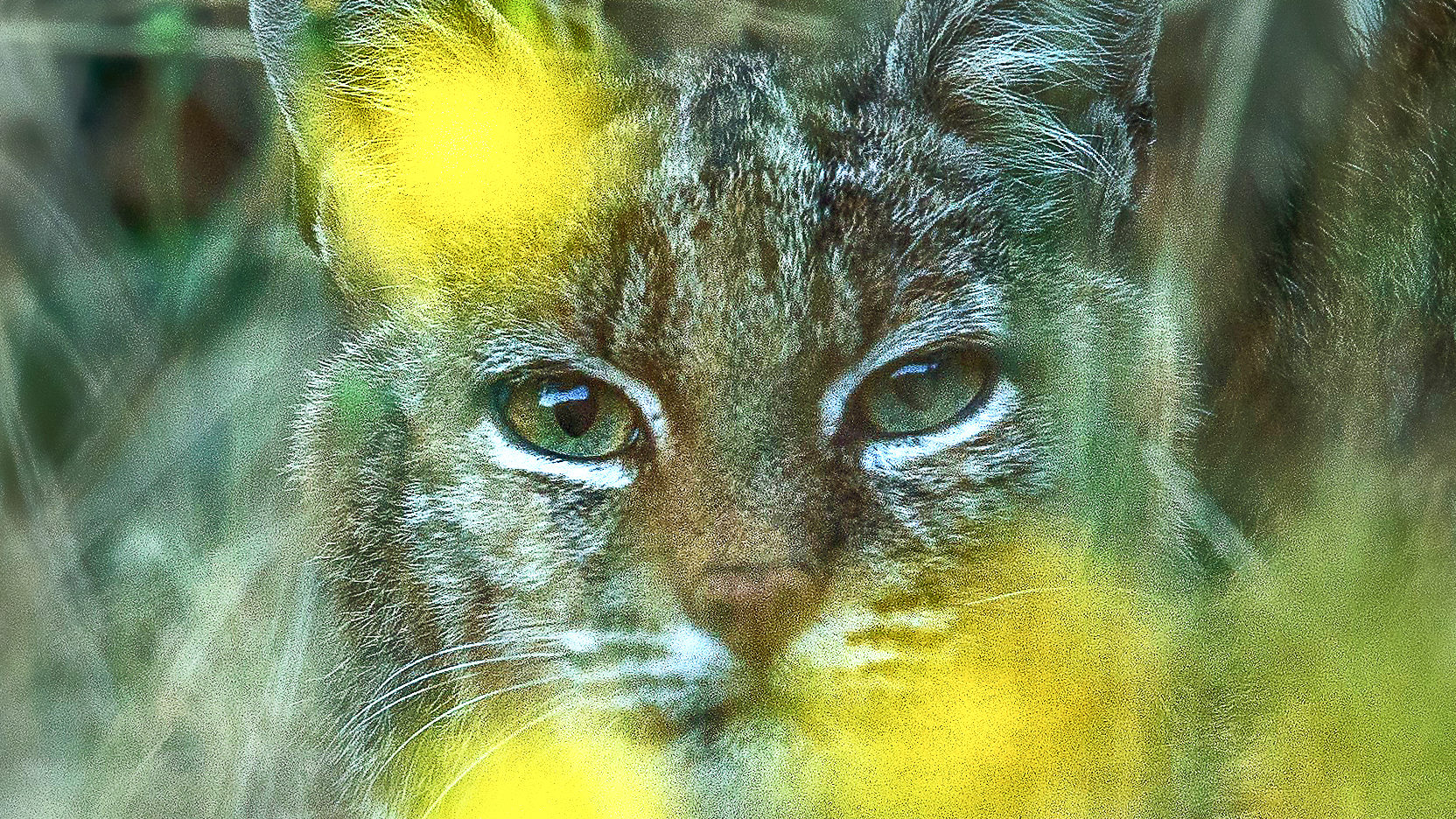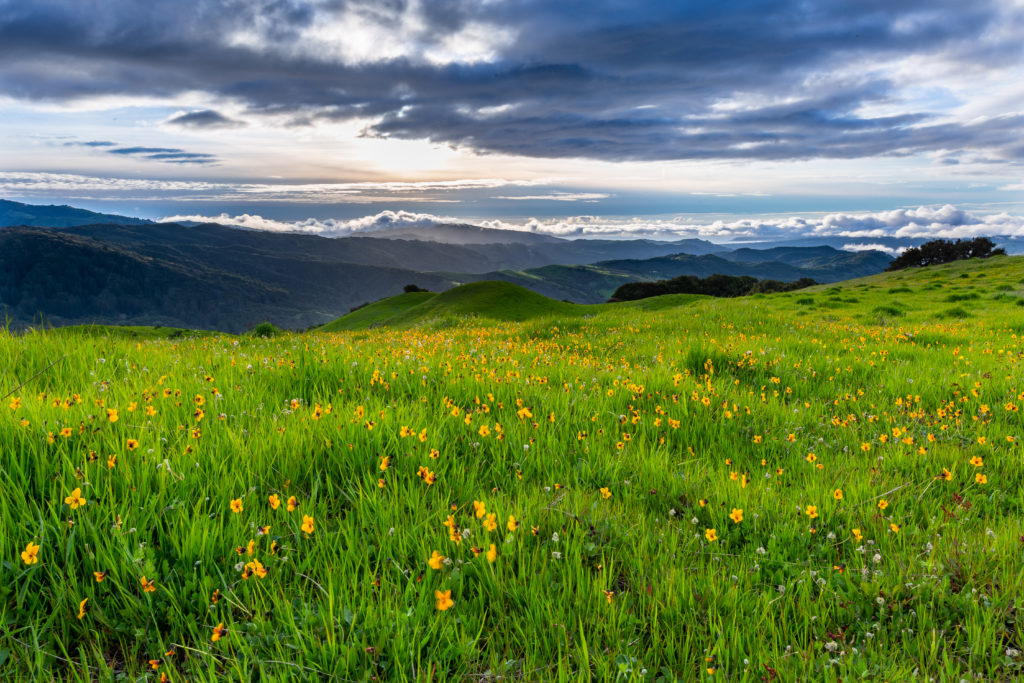
Natural Communities
The Preserve is a mosaic of habitats: maritime chaparral and coastal scrub, grasslands and oak savannas, oak woodlands, coast redwood forests, streams and riparian areas, wetlands and ponds.
Maritime Chaparral & Coastal Scrub
Two of the driest habitat on The Preserve, chaparral and coastal scrub are influenced by marine fog and home to hardy, drought-tolerant plants with long taproots and thick, waxy leaves that allow them to access water deep underground and retain it during the dry season. These shrubby habitats are excellent for reptiles, arachnids and insects, as well as a range of flycatchers and other birds that feed on native berries and pollinate wildflowers.
Grasslands & Oak Savannas
The semi-arid grassland and oak savannas are habitats in transition, found in the margins between woodlands and chaparral. Dominated by bunch grasses, wildflowers, and forbs and studded with oaks, these habitats are crucial for grassland nesting birds, rodents, predatory mammals, and birds of prey.
Oak Woodlands
Receiving 15-40in of rainfall annually, oak woodlands are one of the richest and most variable habitats with over 2,000 plant varieties that thrive in the understory, providing food and shelter for over 300 wildlife species. The oak canopy offers dappled shade, allowing everything from grasses to broadleaf plants to grow. These dense thickets are great for building nests, hiding in hollows, digging burrows, and eating berries.
Redwood Forests
Coast redwoods grow in valleys beside streams, as their roots prefer to have “wet feet.” They gather 20-50% of their water from coastal fog and build a tall canopy that make the understory a dark, damp place where lush greenery, fungi and moss grow, providing food and shelter for a variety of forest dwellers including mountain lions, 10 species of owls, and an abundance of salamanders, snails, and slugs.
Streams and Riparian Zones
Streams and riparian zones serve as the veins of the ecosystem, providing travel corridors and clean, running water for wildlife. Riparian zones are transitional areas between stream and terrestrial systems. They are lush with flood-adapted grasses, forbs, trees, and shrubs and have rich sediments. These habitats support a vast range of wildlife, as all species need clean water to survive.
Ponds & Wetlands
Ponds and wetlands are extremely productive habitats featuring rushes, sedges, and tules. The soil is saturated, ultra-rich in organic matter and anaerobic. These habitats store carbon, filter water, provide flood protection, recharge groundwater, and support countless wildlife species, especially birds, insects, and amphibians.
Sensitive Species
The Preserve hosts an incredible diversity of plants and animals. Learn more about some of our most unusual and rare critters here.
Wildlife Corridors
Roads, dams, urban development, and logging operations disrupt wildlife habitat. Preserving natural wildlife corridors, connective habitats that act as highways for wildlife, are vital for populations to roam between intact habitats. Learn more.
